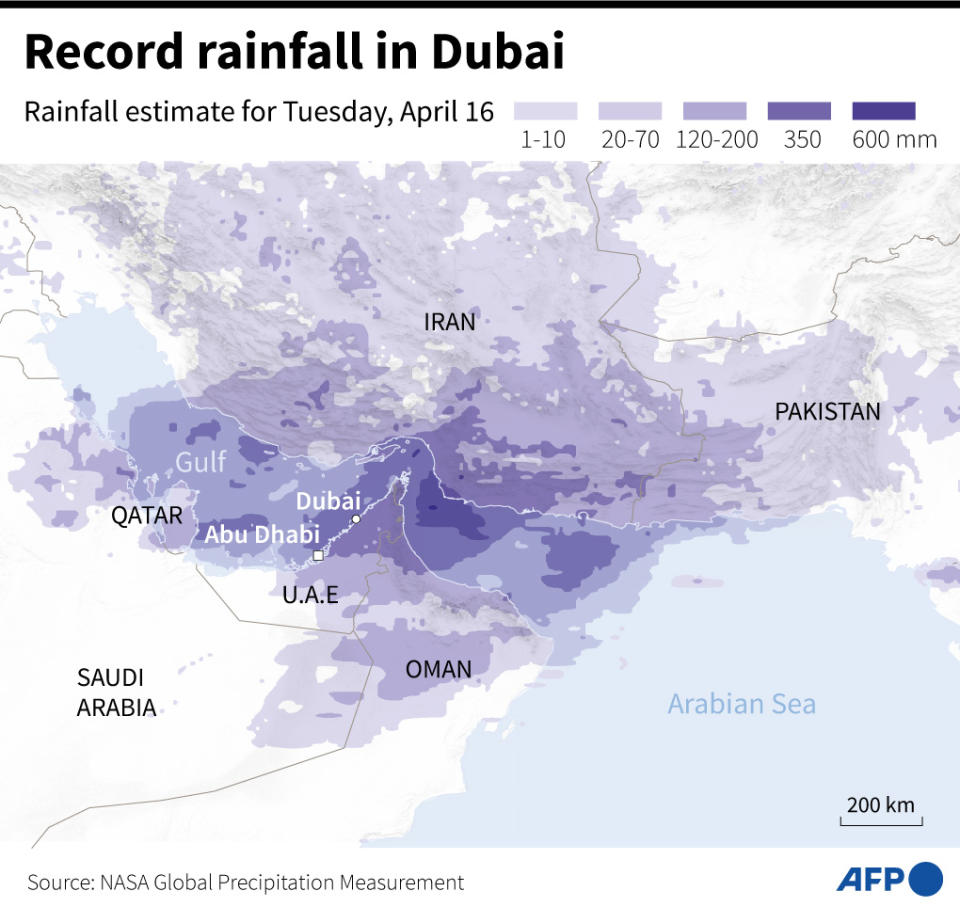Intense rains lashed the UAE and Oman in April, causing deaths and widespread flooding.
Posts online have falsely blamed geoengineering experiments for the devastating rainfall. Many refer to a technique called “cloud seeding,” which introduces compounds into existing clouds to boost the potential for rain or snow (archived here).
However, the truck footage circulating online is computer-generated and unrelated to cloud seeding.
Reverse image searches revealed the clip first appeared February 4, 2024 on TikTok and Instagram with #digitalart, #vfx, #3D and #CGI (archived here and here).
In his Instagram profile, Mostafa Eldiasty — whose posts AFP has previously fact-checked — describes himself as a visual effects (VFX) and 3D artist (archived here).
“It’s my video, I created this using 3D softwares,” he told AFP in a May 3 email.
Kala Golden, a cloud seeding program manager for the US state of Idaho (archived here), also said the images are unrelated to weather modification.
Golden said cloud seeding operations take place both from the ground and by aircraft, but that the process cannot be detected with the naked eye.

Laurence SAUBADUJonathan WALTERAFP
Enhance existing weather
AFP has previously debunked the notion that cloud-seeding programs create floods like those seen in Dubai.
“Cloud seeding cannot generate weather, it can only enhance weather that is existing,” Golden said May 7.
The UAE National Centre of Meteorology (NCM) told AFP in an April 22 statement that it “didn’t conduct any seeding operations during” the recent storms.
The NCM told AFP that it did launch research planes prior to the storms, but that the goal was to take “measurements and cloud samples to better understand the dynamics and microphysical processes that happen in clouds.”
An expert group of scientists said global warming caused by fossil fuel emissions “most likely” exacerbated the floods in the Middle East.
AFP has debunked other claims about weather events and climate science here.
